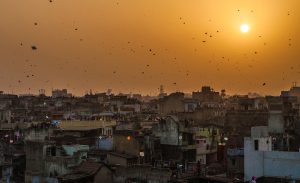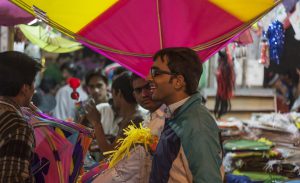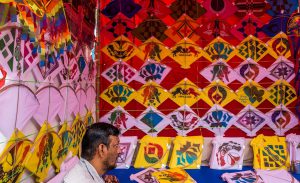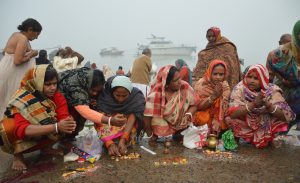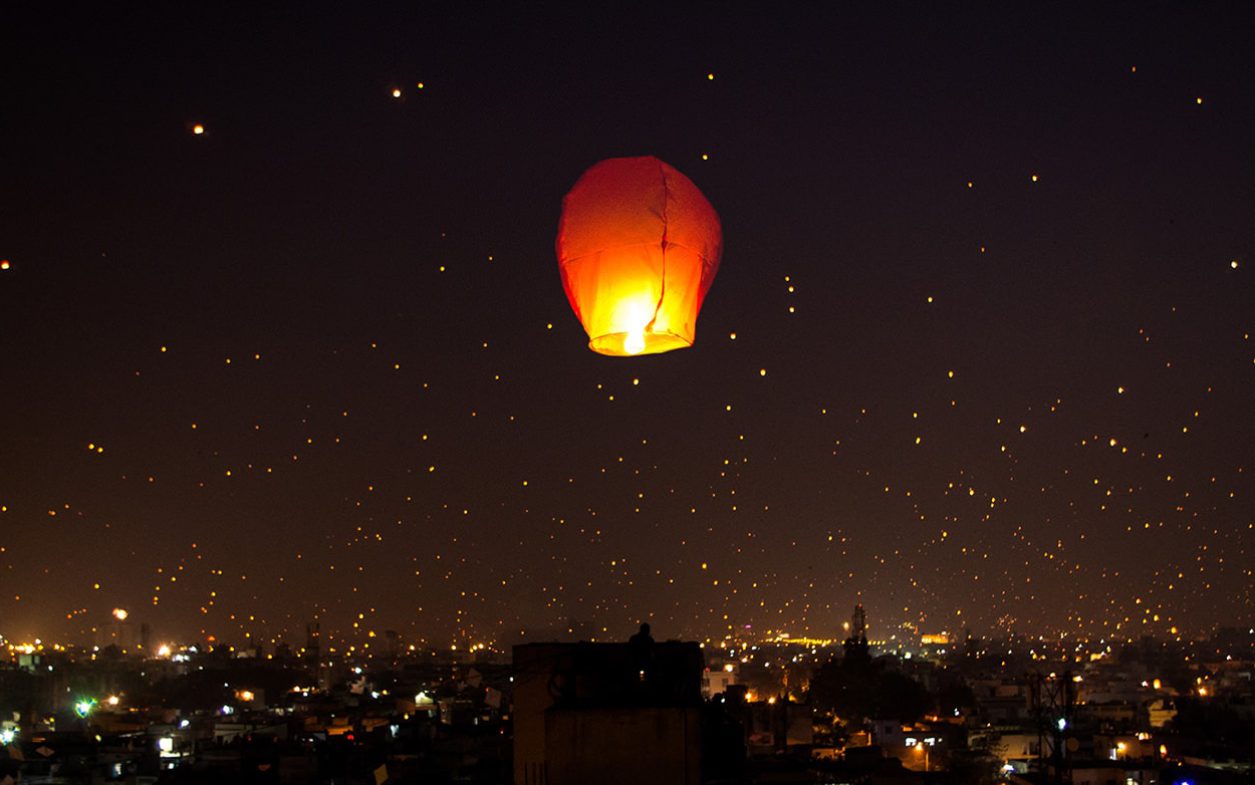
art of travel
Monthly Musing
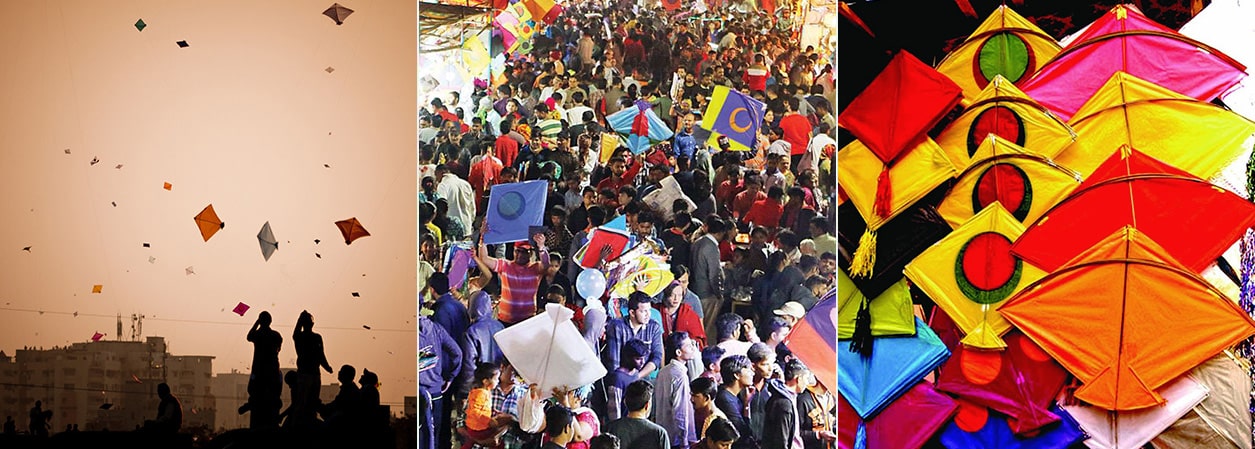
Kite Flying – a Timeless Tradition of Uttarayan
Celebrated during the second week of January, Uttarayan is an Indian festival that marks the period between the winter and the summer solstice. It is a pan-India celebration with different names in different cultures, but in the state of Gujarat in Western India, Uttarayan is a huge celebration synonymous with kite flying and the International Kite Festival.
While kite flying is an integral part of Uttarayan across India, what makes it special in Gujarat is the backdrop of the 15th-century historic walled city of Ahmedabad – a UNESCO World Heritage Site by the eastern bank of the river Sabarmati. It predates Shahjahanabad or Old Delhi by more than 200 years and is said to be the inspiration behind the imperial city built by the Mughal emperor Shahjahan. Just like Old Delhi, the historic walled city of Ahmedabad is a mindboggling mix of traditional settlement patterns, with a multicultural population comprising mainly of Muslim, Hindu, and Jain communities, and multiple interdependent occupational practices. Kite flying here during Uttarayan is a collective, inclusive practice that involves participation from diverse cultural groups – residents of the old city, residents of the new part of Ahmedabad who are extended family members or friends as well as tourists from all over India, and the world.
The historic walled city of Ahmedabad comprises 2,685 listed heritage buildings, out of which 2,236 are privately owned residences and the rest are monuments managed by the local administration and the Archaeological Survey of India. And Uttarayan and kite flying is a perfect showcase of not only the tangible heritage but also the utilisation and adaptability of the spaces of the old city. The Pols are a unique architectural feature here. They are settlements with several residential units belonging to a family or a group of families from the same religion or community, often practicing the same profession. During the days leading to Uttarayan, the Otlas (Verandas) of the Pols on both sides of the streets of the old city facilitate a fascinating visual and verbal communication. They not only serve as temporary extensions to kite-making workshops but also as spaces to display kites and other items used during the festival, adding to the liveliness of the area. The most evident expression of Uttarayan happens on the terraces of the old city where the residents of the Pols dry spices and pickles, sleep during summer nights and use them for social gatherings. During the two days of the festival, the terraces are packed from early morning until nighttime with people taking part in kite flying. For most of the day, the noise from all across the city is deafening. But as the night falls, the kites in the sky give way to sky lanterns. As darkness sets in, the city comes alive with the lights of stunning lanterns slowly ascending into the sky.
What’s New
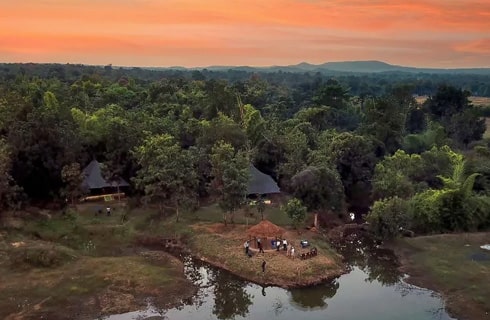
Utsav Camp, Sariska
Utsav Camp at Sariska is a tranquil refuge surrounded by boulders, deciduous forests, and the Aravali hills. This 19-room hideaway with its rustic ambience created using local materials is only two and a half hours from Jaipur. The carefully selected design elements and materials include Kota and sandstone flooring, bespoke wire-mesh chairs and tables with granite tops, and upholstery in earthy terracotta and off whites. Following a zero-mile approach, here you can expect only the freshest, and most nourishing ingredients sourced from their pesticide and chemical-free garden.
Weaving it into an itinerary:
Routing: Delhi – Chambal Safari Lodge, Jarar – Utsav Camp, Sariska (en route sightseeing of the Taj Mahal at Agra and Fatehpur Sikri) – Ranthambore – Jaipur – Shahpurabagh– Udaipur – Delhi
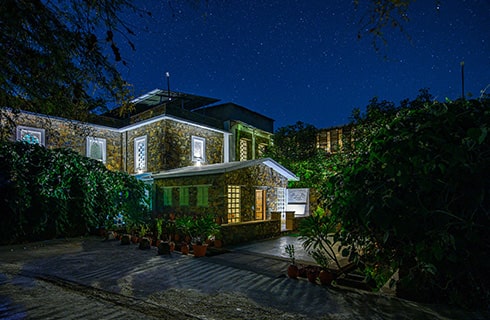
Tadoba Jungle Camp, Tadoba
Located close to the Irai reservoir is the eco-conscious 12 –cottage rustic resort of Tadoba Jungle Camp. Focused on sustainability and the local community, the property is about 10 minutes drive from the Moharli Gate and 15 minutes from the buffer gates of Agarzari and Dewada. Each cottage is located on an elevated platform with a 180-degree view of the Tadoba Andhari National Park landscape. The interiors have wooden and bamboo decor that gives every living space a unique character. Guests can also supplement their safaris with other experiences such as a nature walk in the buffer zone, a fabulous boating trip on the Irai reservoir, a village tour, or a cycling trip through the lush green forests around the resort. Bonfires and special evening meals can be arranged under the stars in the bush or by the poolside.
Weaving it into an itinerary
Routing: Delhi – Jaipur – Agra – Bhopal – Satpura National Park – Pench National Park – Tadoba National Park – Mumbai
Stories from India
Tandoor – The Ancient Clay Oven
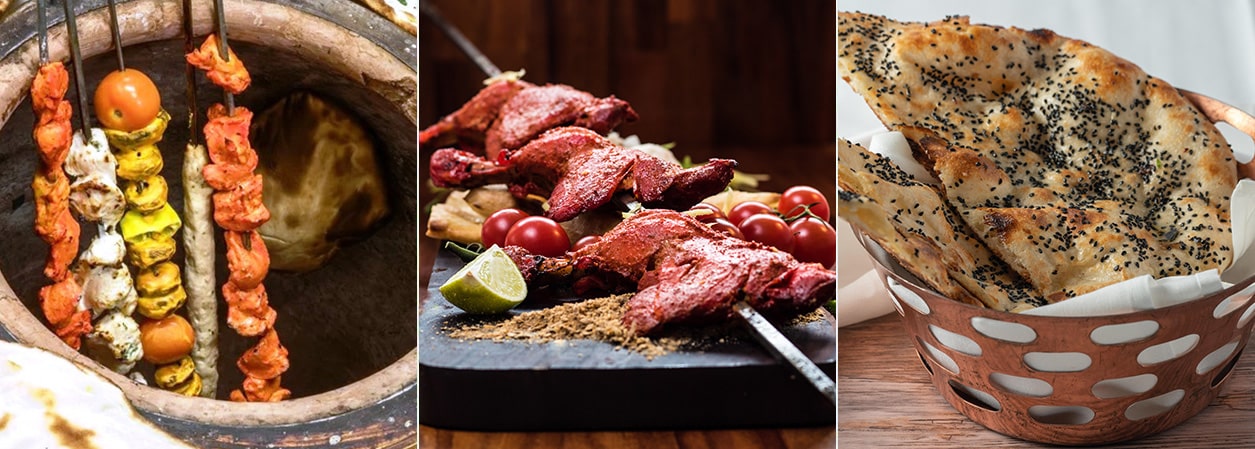
If Italy has its wood-fired brick ovens and Pizza, India has its Tandoor and Tandoori style of cooking. Charred, smoky flavours mark the essence of India’s Tandoori food which originated in its north and northwestern region, now a pan-India and global favourite.
Just like the brick ovens excavated in Pompeii, also the birthplace of Pizza, the Tandoor was found amongst the ruins of the Indus Valley, a Bronze Age Civilisation thus making it an ancient culinary technique. Mesopotamians and ancient Egyptians also used it in different forms. The modern-day Tandoor of India as we know it, however, came with the Mughals. During the reign of Jahangir, a portable version of the Tandoor clay oven was invented to satiate the need of the emperor to be served Tandoori food wherever he travelled.
The importance of the Tandoor, however, goes beyond a simple cooking technique in Sikh history where it was propagated as a community cooking equipment (Sanjha Chulha) to maintain goodwill and remove class and caste barriers. It also served as a place for women to gather, talk, and exchange stories. Lovleen Sagar from our Destination Knowledge Centre saw something similar along the lines of the Sanja Chulha during her recent trip to Morocco.
So next time you are on a holiday in India don’t forget to order the succulent smoky Tandoori chicken. There are excellent varieties of vegetarian Tandoori fare too.
Sustainability and Us
Beejom: A woman, a horse, and an uninhabited land!
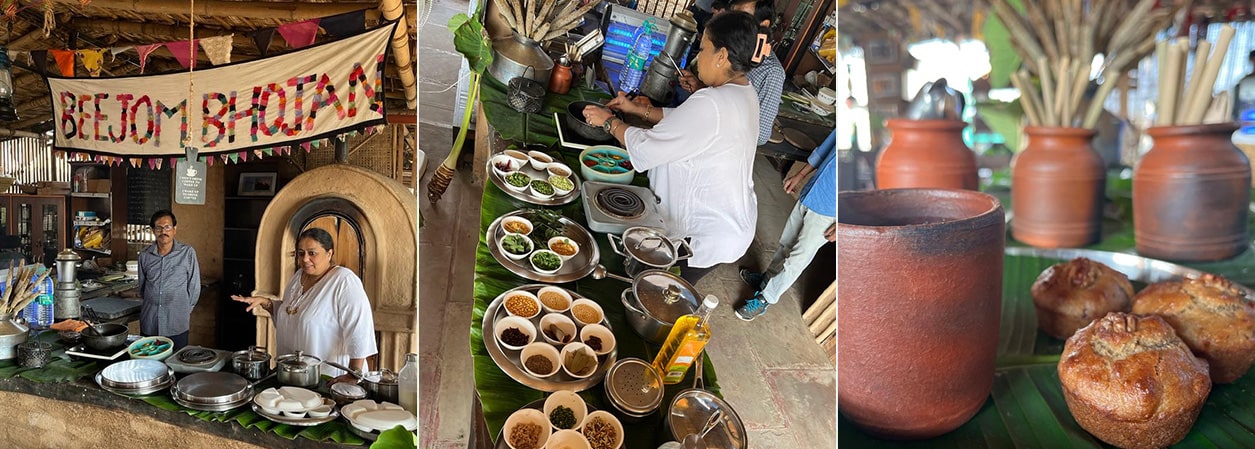
In a world stretched thin for resources and under the threat of global biodiversity loss and climate change, our lifestyle decisions are extremely important. Living sustainably means understanding how our lifestyle choices impact the world around us and finding ways for everyone to live better and lighter.
This is a story of a woman, a horse, and a barren land. In 2014, Aparna Rajagopal chose to live responsibly by completely altering her way of living. A lawyer by profession, an artist by nature, a self-taught farmer, and most importantly a nature lover, she accidently found Beejom to only board the one lone horse she adopted. Today, Beejom is an institution promoting sustainable organic farming practices, restoring the ancient relationship between animals and farmers while promoting soil and water conservation. The land which was barren and lifeless few years ago is full of vegetation, bees, and butterflies with innumerable farm animals including cows, goats, chicken and geese, and Jhakaas, the friendly donkey! All animals contribute to the manure kitty.
An animal sanctuary and sustainable agricultural farm located in Noida, Beejom works with changing soil using natural and traditional farming practises of intercropping, multi cropping, companion planting and crop rotation and permaculture to grow food. The farm hugely promotes Indian millets and traditional food as they believe it is the most obvious way of restoring the food security, health, and ecological wealth of the nation. The farm uses solar energy, biogas, and rain water harvesting techniques.
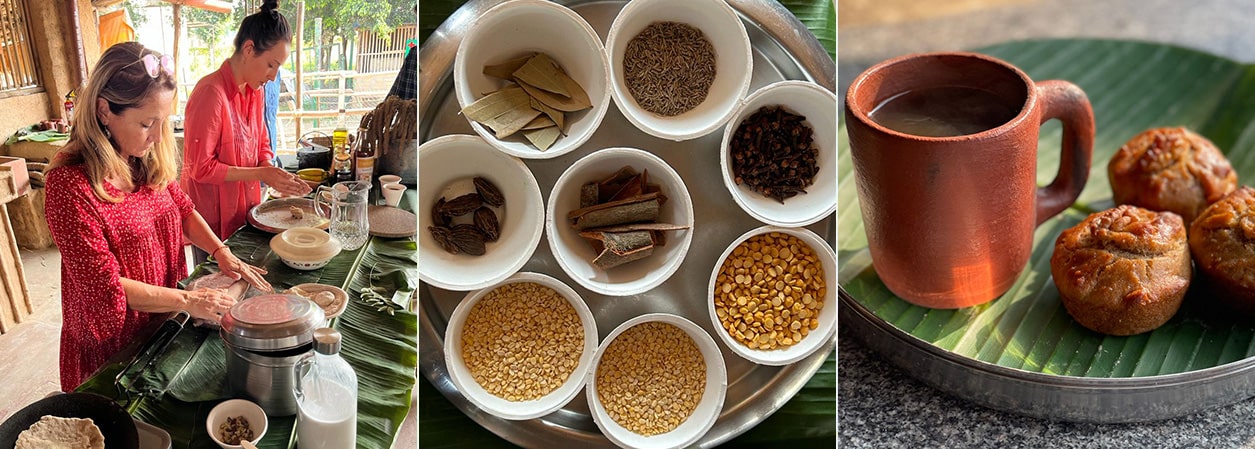
Additionally, Beejom focuses on various initiatives to enhance the standard of living of its farmers and workers. They work with farmers at the grass root level and help in restoring their holdings into organic holistic farms. Education, healthcare, sanitation, and other essential amenities have been made available for them so that they can focus on growing food. Under ‘Beejom Shiksha’, they run a school for the children of their farmers. A programme called ‘Beejom Arogya’ offers a free weekly medical facility to the nearby farming community. Sessions on specialised skill development like making quilts, newspaper bags, pillows, sustainable bin liners, straws, and many other things are provided to the community’s women under ‘Beejom Samuday’ initiative so they may support their families financially and feel empowered.
Over the past many years, they have had innumerable visitors from schools and corporate world for workshops as it is wonderful to be able to connect the two communities and create thought and dialogue. The workshops enable them to share the many stories they have encountered on growing soil, compassion, clean food, carbon foot print, inclusiveness, and environmental protection. Through these workshops, they strive to be a model farm and share their learning with the world around as much as possible.
Take a day out of your hectic life and visit this farm located away from the hustle and bustle of raging metropolis of Delhi. Discover the stories of compassion, carbon footprints, inclusivity, and environmental conservation during this farm visit.
Highlights of the experience:
- Savour a traditional welcome beverage as you arrive.
- Take part in an introductory yoga session to learn different asanas (postures), breathing techniques, mantra chanting, and meditation (Pranayama).
- Meet farm animals like cows, chicks, and calves, know their fascinating stories, observe farmers at work, discover various techniques of organic farming, and pick delicious fruits or what is in season.
- Help your cook prepare a plant-based vegan meal for you using fresh produce from the garden. (The cooking workshop can be replaced with one of the following activities depending upon the guest’s preference:
- Segregation and Composting
- Cooking with Millets – one soup, one starter, one main course, and one dessert.
- Sourdough baking in a wood fire oven.
Beejom is a small project with big ideas. It’s about community living and homesteading; generosity and compassion. It’s about interactions and inclusivity, building knowledge repositories and sharing freely. It’s about all the many stories of the beautiful journey towards sustainable living. This planet needs it now more than ever
Explore
Kochi-Muzuris Biennale 2022 (12 Dec, 2022 –10 Apr, 2023)
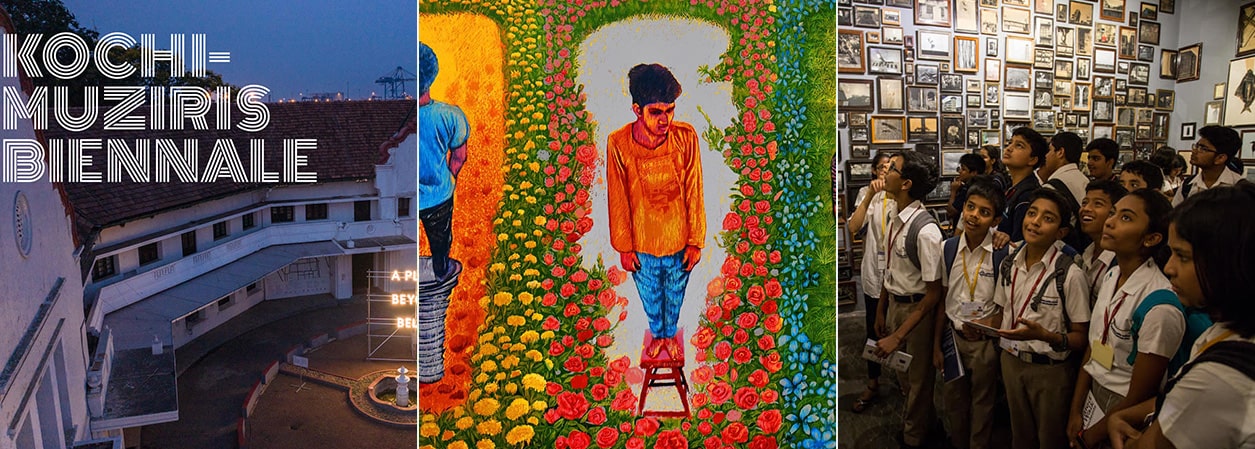
Every two years, Fort Kochi and Mattancherry becomes the venue for the Kochi Muzuris Biennale, which brings artists from different parts of the world. The whole town gets transformed into a giant art gallery.
This exclusive tour designed by a friend of the Destination Knowledge Centre we will take guests through the stories of some of the local artists who are not popular enough to be part of the Biennale, yet how this big event is beneficial for them. We look into what the Biennale means for the local artist and the Kochiites – the local folks of Kochi.
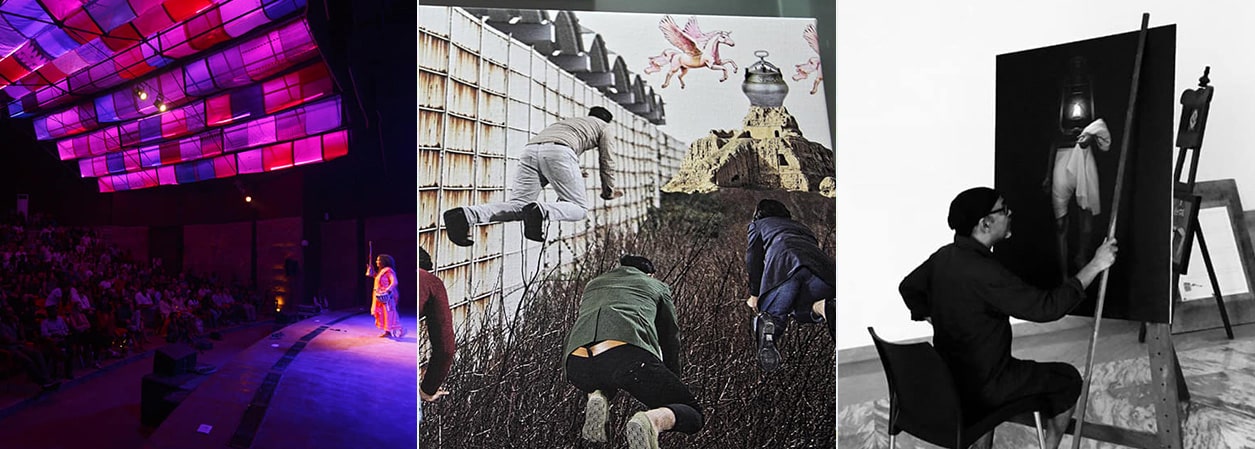
THE TOUR
The essence of every culture is codified in their colours. When we decode the symbolisms and meanings behind these colours we can understand and appreciate the depths of every culture. Each culture picks and chooses certain colours to tell their stories, and there are stories behind why these colours were chosen to tell their stories! Through this tour we would like to tell you about the stories behind the Colours of Cochin. Fort Kochi and Mattancherry is not just a city, it is more like a five-dimensional painting! The streets, buildings, the people form the three known dimensions. The fragrance of spices and the cacophony of noises form the fourth and fifth dimensions! The beige themed heritage buildings form the main canvas on which this tour is painted. The colours of the clothes, the food, the churches, mosques, temples, and synagogues all add depth to this tour. This tour is highly localised, we tell you the stories of the local people; yet we can’t help but find a global connection to our stories! After all, Kochi has been a global trade centre for 2 millennia! During this tour we will take you through the cultural significance of certain colours and how some colours have contradicting meanings from one culture to another!
Highlights: Walk around the Biennale town and Interact with local artists and Kochiites.
Duration: 3 hrs
Starts: 16:00 hrs | Ends: 19:00 hrs
Special Remark: Though designed keeping the Kochi Muzuris Biennale in mind, the tour can be experienced throughout the year (except for the rainy season – May to August
Festivals to look out for
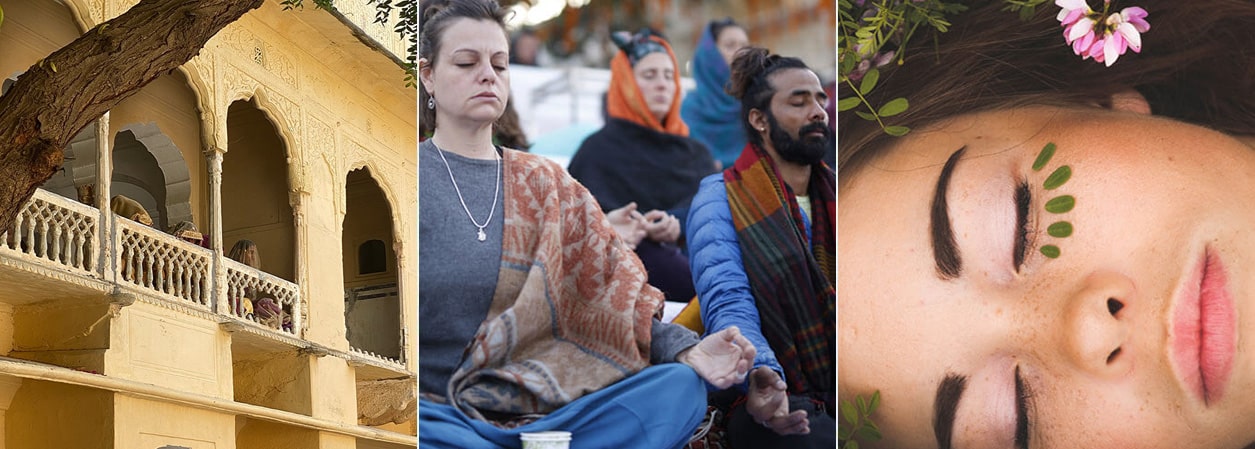
Immerse yourself in a magical journey at The Sacred, Diggi Fort from 3rd to 5th March 2023
In March 2023, the walls of the 600-year-old Diggi fort will reverberate with the poignant, lively, and celestial musical experience of The Sacred festival. Conceived by Teamwork Arts, The Sacred is a celebration of mindful living with sacred music performances, healing therapies, yoga, guided meditation, themed workshops, and food trails.
Savour an unmatched experience steeped in history, soulful music, nourishing food, holistic healing, mindfulness, and the majestic feeling of being inside a magnificent living fort! Located around two hours drive away from Jaipur, one can easily add a day or two at the quaint little town of Diggi to be a part of this memorable journey and enjoy regal and classical old-world hospitality till you leave!
RESOURCES
SITE LINKS
CONTACT US
+ 91 (124) 4563000
Tower B, Delta Square, M.G. Road, Sector 25, Gurgaon - 122001, Haryana, National Capital Region of Delhi, India


